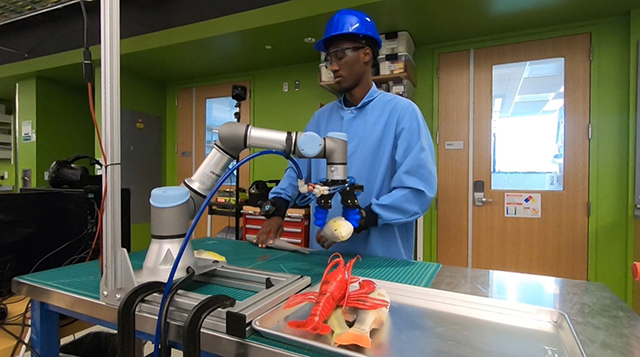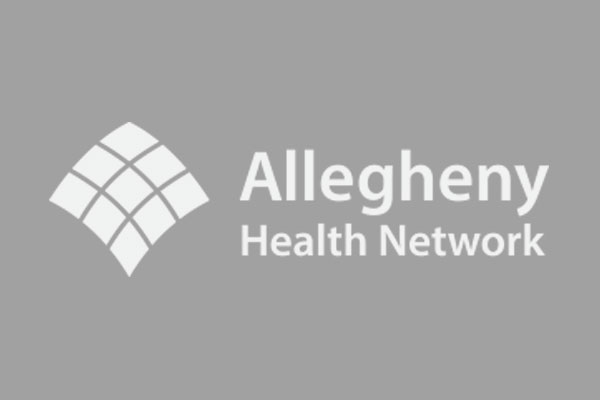
Facing A New Normal and Fostering Recovery
The success story of Pittsburgh’s transformation has been building and steadily gaining attention beyond the City of Bridges. Now, the coronavirus pandemic threatens the region’s momentum—and the challenges are formidable.
The region’s unemployment peaked at 17 percent in April 2020, before some jobs were recovered. By mid-September, close to 120,000 people in southwestern Pennsylvania were filing for unemployment.
Such staggering numbers are hardly unique to the area, as the country, and the world, continues to grapple with the most socially and economically disruptive event in recent memory. While we all look forward to putting the pandemic behind us, bold action, leadership, and support are crucial to carrying Pittsburgh through such turbulent times.
Yet Pittsburgh is accustomed to challenge and to adaptation. Following the decline of the steel industry in the 1970s and ’80s, Pittsburgh has steadily reemerged as a leader and innovator in technology, health care, energy, finances, and other fields that have redefined the region’s capabilities. While the pandemic has affected progress and momentum in some of these key sectors, it has also spotlighted areas of concern and ways to improve the Pittsburgh region for all. Who are the drivers of Pittsburgh’s recovery? What efforts are underway to spur the regional economy and reinvigorate Pittsburgh’s potential? Answering these questions offers critical insight into how the region has and will continue to navigate the pandemic’s uncertainties.
The pandemic and resulting economic difficulties are not over, but, in order to focus recovery efforts, the Allegheny Conference on Community Development, a civic leadership organization, released its Pittsburgh Region Recovery Framework report in October. The framework identifies key recovery action areas for the Pittsburgh region, such as advancing small- and mid-sized business relief resources and accelerating inclusive economic growth in innovation and research-driven sectors, among other key actions.
The Allegheny Conference is uniquely positioned to mobilize business and civic leaders from across the 10-county region to enhance economic growth and competitiveness, propel sectoral innovation, and address municipal solvency and community investments in collaboration with the public sector. In collaboration with leaders and experts throughout the region, the Conference is also focusing on establishing regional reskilling, developing a small- and mid-sized business relief system, and ensuring survival of critical institutions.

As various recovery efforts and policies take shape, the Recovery Framework emphasizes equity across all measures. “What we know about racial inequity is that some of it was unintended consequences of policy-making. That doesn’t make it right. So how do we actually learn from that and be much more mindful and strategic?” says Vera Krekanova, chief strategy and research officer at the Allegheny Conference. “With every policy that we’re making, with every step of the recovery, we have to keep asking the question, ‘Does this improve equity?’ And if not, go back to the drawing board.”
The Pittsburgh region’s connectivity and collaboration practiced by its companies and institutions make for a key asset in terms of driving recovery, Krekanova says. Public-private partnerships thrive in Pittsburgh. In many ways, our higher education institutions are collaborators and partners.

But the region faces its share of recovery obstacles too. Digital connectivity, especially for rural communities, and access to the tools and technology that enable remote learning and communication are inaccessible for some. In eight out of the 10 counties in the Pittsburgh region, more than 25 percent of households lack internet connectivity, according to the Allegheny Conference. The region has also faced population decline for some years, and how the pandemic is affecting population numbers may not yet be clear. People driven from larger cities with high cost of living may look to more affordable cities like Pittsburgh when relocating.
It’s clear, however, that Pittsburgh, like most places, has lost out on tourists and other visitors to the region due to pandemic-related travel restrictions. People won’t soon forget about what cities like New York or Las Vegas can offer to visitors, Krekanova says, but missing out on visitors means that Pittsburgh has lost some momentum building its reputation and appeal as a travel and relocation destination. “We’re losing out in the sense of connectivity nationally and globally. Once people or businesses experience us, they’re more likely to live here.”
Small Businesses: Bringing Vibrancy to the Region’s
Main Streets
Small businesses in the Pittsburgh region are engines for our region’s economy, accounting for 99 percent of all businesses and 75 percent of all jobs, according to the Allegheny Conference. For numerous reasons, small businesses are worth fighting for. “There’s a lot of pride in people’s neighborhoods and people’s towns. And I think we recognize that a big part of what creates that sense of pride, what creates that sense of place, are our small businesses. That’s where we work. That’s where we shop. That’s where we make our B2B purchases from,” says T.J. Bogdewic, president and CEO of Bridgeway Capital. “Those businesses, because they’re a part of where we’re from, are a part of who we as individuals are,” Bogdewic says. “They’re job creators. And they bring vibrancy to Main Street.”
Bridgeway Capital is a nonprofit lender that provides capital and loans to businesses and areas in Western Pennsylvania often underestimated or overlooked by traditional financial markets and lenders, Bogdewic says. Approximately 90 percent of its lending goes to lower- and moderate-income communities. Suffice it to say, the pandemic downturn has magnified demand for Bridgeway’s services. “We did more loans last year than we’ve ever done in Bridgeway’s history,” Bogdewic says, in reference to the fiscal year’s unprecedented loan volume.

While loans and emergency funding have kept some small businesses afloat, accessing funding has also been key to businesses making the necessary adaptations to be COVID compliant. That could mean purchasing outdoor seating or upgrading ventilation systems. For other businesses that have had to keep their buildings closed, the pandemic shutdown has permitted time to work on capital projects that also require borrowed funds to complete.
Some businesses have even been able to retool themselves to respond to the pandemic, Bogdewic says, like some local maker companies that shifted to sewing and producing PPE. But supporting all of these businesses and efforts has required extra funding and coordination. As the pandemic set in, a first step for Bridgeway was to pull together funding from foundations and other sources. Pennsylvania’s Department of Community and Economic Development worked with a variety of community development financial institutions, including Bridgeway, to dispense $190 million to support businesses statewide, Bogdewic says. Half of this funding was designated for minority-owned businesses.
Pittsburgh’s affordability can lower some barriers to entry for small businesses starting out, Bogdewic says, and such businesses bring flavor and vitality to towns. But neighborhoods in the region have also been starkly divided along racial lines, posing unique challenges. “Our work at Bridgeway is to try and break down those barriers and address those hurdles. But you have to do that while still respecting and maintaining the unique characteristics of those neighborhoods,” Bogdewic says. “It’s important for all of us now to think regionally and act locally and to support businesses not just in our immediate neighborhood or our immediate town but to be cognizant of neighborhoods that are experiencing the worst effects of the pandemic.”

For Tina Daniels, owner of the Pittsburgh-based residential remodeling and construction company Concrete Rose Construction, the coronavirus pandemic struck just as her business was entering its second year. But things didn’t come screeching to a halt. While some projects were put on hold because of the pandemic, she still had contracts and work in place, and she needed funding but was turned down by traditional lenders hesitant to lend to such a new business. Bridgeway Capital, however, provided her a loan. “The market is booming with building right now in Pittsburgh. It is just off the charts with the amount of work there is for the construction industry right now in the city,” Daniels says. “I would have never been able to move the way I’m moving this year without [the loan].”
Mending Municipalities Affected by COVID-19
Within the counties that make up the Pittsburgh region, various municipalities and the neighborhoods and small businesses that they contain lend to Pittsburgh’s distinctive living and sense of place. So, how have all of these municipalities fared during the pandemic disruption? There may be no singular answer, since each municipality has its own unique background and extent of resources. Allegheny County, which contains 130 municipalities, including the City of Pittsburgh, experienced stable economic standing just prior to the pandemic, marked by low unemployment and steady property tax revenue. This has helped to lessen the blow to the county’s municipalities, says George Dougherty, an assistant professor in the University of Pittsburgh’s Graduate School of Public and International Affairs, who studies regional governance, municipal finance and management, and citizen engagement.
Most municipalities have had some reserve funding to help get through tough times, Dougherty says, but we could see measures like tax bumps, service reductions, and similar adjustments needed to tweak revenues and expenditures.
Still, municipalities with downtowns and other zones that attracted customers have lost out on parking revenue, Dougherty says. Loss of fans at the city’s sports stadiums and other venues is a prime example. But larger municipalities, such as the City of Pittsburgh, may also have an easier time making cost-saving reductions, compared to smaller boroughs with less flexibility. “Because of scale, it is a little bit easier for them to trim around the margins. When you have about 4,200 employees, somebody’s retiring all the time,” Dougherty says.
Regional municipalities might also delay certain capital projects in order to save money. “I think next year, there will be fewer parks and pavilions replaced and probably some fewer miles of roads paved. But we’ll see,” Dougherty says. As recovery efforts take shape and solidify, earned income tax should be one of the quickest revenue sources to bounce back, Dougherty says.

Business Support and Innovation
Sectors such as health care, life sciences, and tech-related business services that have helped to redefine Pittsburgh’s economy in recent years are recovering more quickly from pandemic losses. And despite all of the setbacks that the pandemic has caused, it has also highlighted certain opportunities and means of addressing manufacturing deficiencies.
At Pittsburgh’s Advanced Robotics for Manufacturing (ARM) Institute, 2020 has been an especially busy year. The ARM Institute works to grow and enhance U.S. manufacturing capabilities and competitiveness by accelerating and integrating adoption of novel robotic technologies and addressing workforce development issues concerning upskilling or reskilling manufacturing employees.
It turns out that many of the pandemic’s greatest urgencies—manufacturing personal protective equipment, performing COVID-19 testing, disinfecting spaces—can all be supplemented by robotics. “I think we saw our mission magnified by COVID, but it’s not going to change,” says Suzy Teele, ARM’s head of marketing and communications. “The work that we’re doing, I think, is even more important as we move forward because of our need to be able to manufacture more in the United States and do it in a cost-competitive way.”
Pittsburgh possesses clear robotics, artificial intelligence, and manufacturing aptitude. Research in these fields emanates from local universities like Carnegie Mellon University, and Pittsburgh houses its own “Robotics Row,” a hotbed of robotics, AI, and technology companies situated along the Allegheny River in the Strip District and Lower Lawrenceville neighborhoods.
The pandemic has spotlighted the need to increase our manufacturing capabilities, Teele says, pointing to critical manufacturing shortcomings with PPE production, COVID testing materials, and other supplies. In 2020, ARM received and distributed approximately $5 million in Department of Defense funding to advance projects addressing COVID and robotics. For example, robots that can sew could enable more efficient cloth mask production here in the United States. Similarly, robots could perform certain steps of the COVID testing procedures, scaling up testing capabilities and speed. Instead of sending in humans to clean contaminated areas, autonomous mobile robots can disinfect.
In addition to robotics, Pittsburgh is an educational powerhouse. Having so many universities, colleges, and educational resources in Pittsburgh provides ample learning opportunities and choices among higher education institutions. For the region’s companies and organizations, having such diverse and numerous schools also provides steady access to talent, as new graduates become job seekers who are well suited to the business sectors and types of careers prevalent in Pittsburgh. Producing qualified and capable new talent could give Pittsburgh an edge, as good workers become even more valuable during times of economic disruption.
Attracting recent graduates is always a challenge, however, amid competition from other cities and nationwide job opportunities. For companies like PPG—a Pittsburgh-based Fortune 500 company and global supplier of paints, coatings, and specialty materials—being involved with local universities’ activities, recruitment events, and forums on topics like innovation and career development is key, says Bryan Iams. “It’s important to show the energy of the region to the talent at the university level,” says Iams, who is vice president of corporate communications and government affairs at PPG.
The range of industries—energy, finance, health care, education, manufacturing, and more—that characterize Pittsburgh’s business sectors offers greater selection for new job seekers, and the sector diversity also helps to undergird the region’s economy. “If you are all in one sector and that sector was really hit hard by the pandemic, it can leave long-lasting damage,” Iams says. “I think Pittsburgh is well-suited to come out of the pandemic probably more quickly than other economies.”
Like many large companies navigating the pandemic, PPG has seen an ebb in demand for certain products that it produces while other items, like coatings used in the production of food and beverage cans and also DIY paint, have gotten a boost, Iams says. But, especially now, large companies’ commitments to their communities and their capacity to provide support are paramount.
Toward the beginning of the pandemic, PPG distributed 80,000 N95 protective masks to frontline health care workers across the United States, Iams says, half of which went to regional health care facilities. While PPG doesn’t produce N95 masks, it leveraged its supply chain to procure the donated items.“N95 masks, those are a key protective piece in the paint process and when applying paint,” Iams says. “We had access to those around the world. We used our global supply chain to bring those in. We don’t make masks. That’s not our business. But it’s something we felt was really important.”
Acts of support and goodwill are not hard to find around Pittsburgh. Yet so many qualities and bold attributes will be demanded, not least of which are resiliency and leadership. “The history has shown that the Pittsburgh region is very resilient. We’ve demonstrated that resiliency after the steel industry had a collapse in the 1980s. We’ve shown it as industry has transformed,” Iams says. “Leadership across the sectors will come together even more strongly than before, I think. Times like this tend to build lasting relationships.” mg









